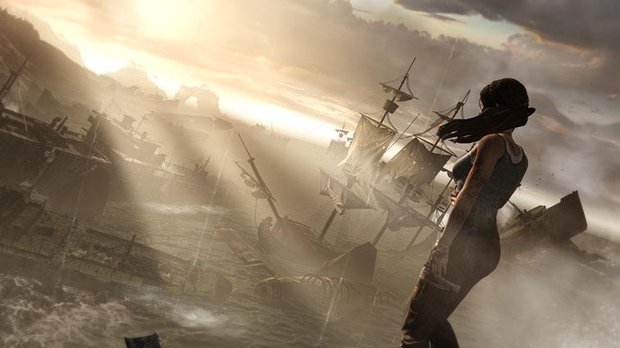Lara Croft: Most real hero of current-gen
How Tomb Raider's bloody brutality tells her story better than any cutscene could
Tomb Raider’s storytelling is excellent, though it might not be immediately appear so. You see while Tomb Raider’s dialogue is decent, it's hardly a revolution in game writing. Similarly, its acting sits comfortably within the “strong for a video game” camp, but is hardly Oscar-worthy. And the direction of its dialogue-driven cutscenes is often stiff and a tad dull, particularly during the early stages of the game.
But regardless of all that, it serves up one of the most affecting action game stories in quite some time, and along the way cements its protagonist as one of current-gen’s most fully explored and completely relatable. Because in Tomb Raider that stuff doesn’t come by way of flat, waxy-faced cutscenes or ponderous expositionary journal entries. No, Tomb Raider is cleverer than that. Tomb Raider’s very best storytelling is always a product of its gameplay. Because the design of that that gameplay is all about empathy. As such, it all starts with the design of the protagonist herself.

It’s often fun to step into the inch-thick steel boots of a Grimface McBrickeater and commit the odd extraterrestrial genocide without fear of repercussion. There’s not a damn thing wrong with a bit of murderous escapism, provided you don’t actively involve schizophrenia and a big carving knife. But however much fun it might be to play as those characters, it’s impossible to ever really embody them. Because as a human being it’s just impossible to empathise with a 7-foot tall walking roadblock made entirely of gristle and emotional distance.
But deprived of the action game hero’s traditional bulletproof skin, Lara’s every success, failure and slim escape from underwhelming wheelchair-bound sequeldom is something that the similarly weak, squishy, highly flammable human player can understand directly. Yes, she manages to survive a ludicrous amount of damage over the course of the game (add together the various stabbings, lacerations, broken bones and beatings that occur during the first few hours alone, and she should realistically end up as something more akin to the dead, immolated corpse of a broken-bodied Silent Hill nurse than a leaping, bow-twanging teenage Indiana Jones), but her nature as young girl rather than armour-plated man of guns is used to make each and every bump, bang and burn a whince-inducing experience.

But if Tomb Raider just beat the crap out of Lara and handed over her bloodied body for the approving sympathy of the player then it would be little more than a creepy torture-porn babysitting simulator. An unpleasant hierarchical dichotomy between protector and victim, forcing a clear divergence between player and character. But instead, Tomb Raider leverages Lara’s physical weakness as a narrative tool, using it to bond player and character as one. With Lara no more capable, confident or amused by traumatic physical injury than any real human being, Tomb Raider takes that empathy and runs with it for the duration of an unspoken narrative played out almost purely through gameplay. And perhaps surprisingly, all of that story’s most emotive moments come as a direct result of shooting men in the head.
Weekly digests, tales from the communities you love, and more



